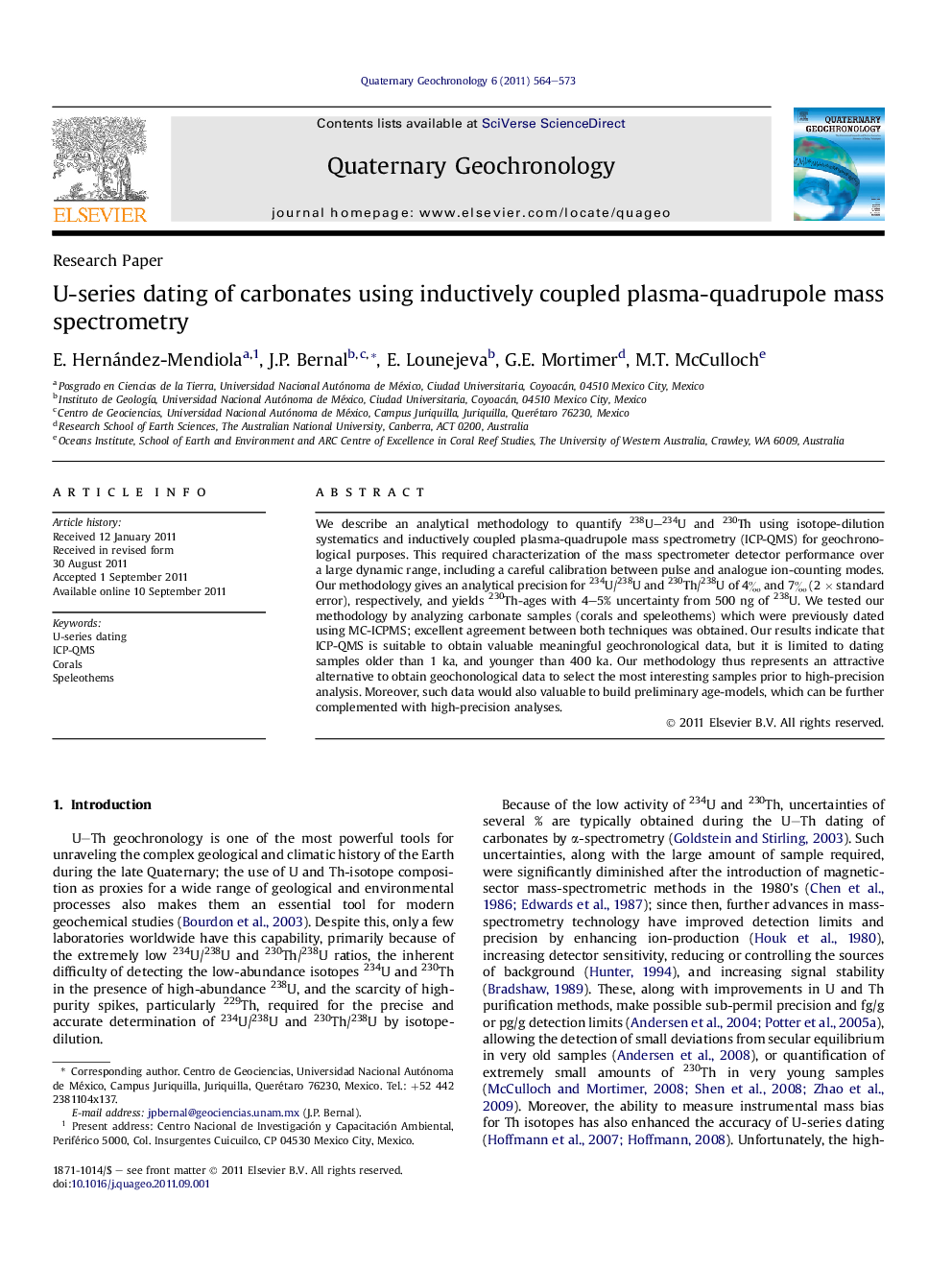| Article ID | Journal | Published Year | Pages | File Type |
|---|---|---|---|---|
| 4725166 | Quaternary Geochronology | 2011 | 10 Pages |
We describe an analytical methodology to quantify 238U–234U and 230Th using isotope-dilution systematics and inductively coupled plasma-quadrupole mass spectrometry (ICP-QMS) for geochronological purposes. This required characterization of the mass spectrometer detector performance over a large dynamic range, including a careful calibration between pulse and analogue ion-counting modes. Our methodology gives an analytical precision for 234U/238U and 230Th/238U of 4‰ and 7‰ (2 × standard error), respectively, and yields 230Th-ages with 4–5% uncertainty from 500 ng of 238U. We tested our methodology by analyzing carbonate samples (corals and speleothems) which were previously dated using MC-ICPMS; excellent agreement between both techniques was obtained. Our results indicate that ICP-QMS is suitable to obtain valuable meaningful geochronological data, but it is limited to dating samples older than 1 ka, and younger than 400 ka. Our methodology thus represents an attractive alternative to obtain geochonological data to select the most interesting samples prior to high-precision analysis. Moreover, such data would also valuable to build preliminary age-models, which can be further complemented with high-precision analyses.
► We successfully quantify 238U–234U–230Th in carbonates by isotope dilution ICP-QMS. ► Precision (2SE) is 3–4‰ for 234U/238U, and 6–7‰ for 230Th/238U using 500 ng U. ► Accuracy is comparable with MC-ICPMS resulting in 230Th age uncertainties <5%. ► We successfully apply ICP-QMS methods to date speleothems and fossil corals with age range ∼1–400 ka.
